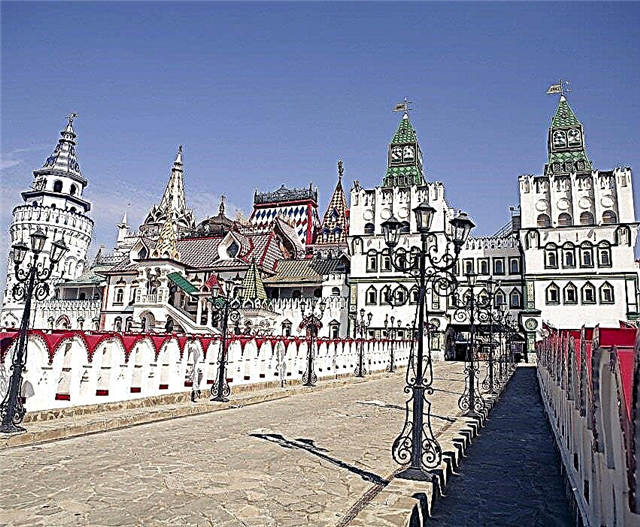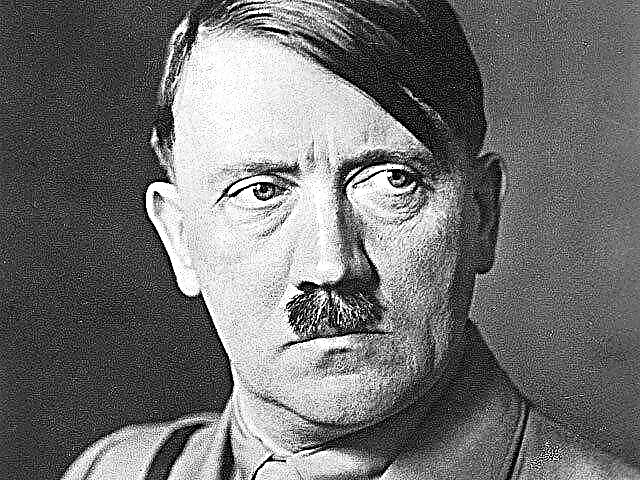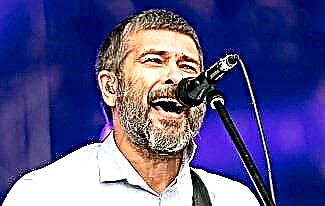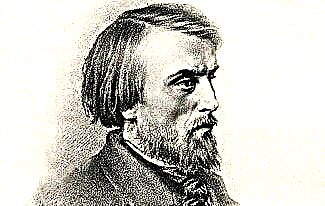Dmitry Dmitrievich Shostakovich (1906-1975) - Russian and Soviet composer, pianist and music teacher. People's Artist of the USSR and laureate of many prestigious awards.
One of the greatest composers of the 20th century, author of 15 symphonies and 15 quartets, 6 concerts, 3 operas, 3 ballets, numerous works of chamber music.

There are many interesting facts in Shostakovich's biography, which we will discuss in this article.
So, before you is a short biography of Dmitry Shostakovich.
Shostakovich's biography
Dmitry Shostakovich was born on September 12 (25), 1906. His father, Dmitry Boleslavovich, studied physics and mathematics at St. Petersburg University, after which he got a job at the Chamber of Weights and Measures, recently founded by Mendeleev.
The composer's mother, Sofya Vasilievna, was a pianist. It was she who instilled a love of music in all three children: Dmitry, Maria and Zoya.
Childhood and youth
When Shostakovich was about 9 years old, his parents sent him to the Commercial Gymnasium. At the same time, his mother taught him to play the piano. Soon she took her son to the music school of the famous teacher Glasser.
Under the guidance of Glasser, Dmitry achieved some success in playing the piano, but the teacher did not teach him composition, as a result of which the boy dropped out of school after 3 years.
During that period of his biography, the 11-year-old Shostakovich witnessed a terrible incident that remained in his memory for the rest of his life. Before his eyes, a Cossack, dispersed a crowd of people, cut a child with a sword. Later, the young composer will write a work "Funeral March in memory of the victims of the revolution", based on the memory of the tragedy that happened.

In 1919 Dmitry successfully passed the exams at the Petrograd Conservatory. In addition, he was engaged in conducting. A few months later, the young man composed his first major orchestral work - "Scherzo fis-moll".
The following year Shostakovich entered the piano class of Leonid Nikolaev. He began attending the Anna Vogt Circle, which focused on Western musicians.
Dmitry Shostakovich studied at the Conservatory with great zeal, despite the difficult times that swept Russia then: World War I (1914-1918), the October Revolution, famine. Almost every day he could be seen at the local Philharmonic, where he listened with great pleasure to concerts.
According to the composer at that time, due to physical weakness, he had to get to the conservatory on foot. This was due to the fact that Dmitry simply did not have the strength to squeeze into the tram, which hundreds of people were trying to get into.
Experiencing serious financial difficulties, Shostakovich got a job in a cinema as a pianist, who accompanied silent films with his performance. Shostakovich recalled this time with disgust. The job was low-paying and took a lot of energy.
At that time, significant help and support to the musician was provided by the professor of the St. Petersburg Conservatory Alexander Glazunov, who was able to procure him an additional ration and a personal scholarship.
In 1923, Shostakovich graduated from the Conservatory in piano, and a couple of years later in composition.
Creation
In the mid-1920s, Dmitry's talent was noticed by the German conductor Bruno Walter, who then came on tour to the Soviet Union. He asked the young composer to send him to Germany the score of the First Symphony, which Shostakovich had written in his youth.
As a result, Bruno performed a piece by a Russian musician in Berlin. After that, the First Symphony was performed by other well-known foreign artists. Thanks to this, Shostakovich gained a certain popularity all over the world.

In the 1930s, Dmitry Dmitrievich composed the opera Lady Macbeth of the Mtsensk District. An interesting fact is that initially this work was enthusiastically received in the USSR, but later was heavily criticized. Joseph Stalin spoke of opera as music incomprehensible to the Soviet listener.
In those years, biographies Shostakovich wrote 6 symphonies and "Jazz Suite". In 1939 he became a professor.
In the first months of the Great Patriotic War (1941-1945), the composer worked on the creation of the 7th symphony. It was first performed in Russia in March 1942, and after 4 months it was presented in the United States. In August of the same year, the symphony was performed in besieged Leningrad and became a real encouragement for its residents.

During the war, Dmitry Shostakovich managed to create the 8th Symphony, written in the neoclassical genre. For his musical achievements by 1946 he was awarded three Stalin Prizes!
Nevertheless, a couple of years later, the authorities subjected Shostakovich to serious criticism, accusing him of "bourgeois formalism" and "groveling before the West." As a result, the man was stripped of his professorship.
Despite the persecution, in 1949 the musician was allowed to fly to America for a world conference in defense of peace, where he gave a lengthy speech. The following year, he received the fourth Stalin Prize for the cantata Song of the Forests.
In 1950, Dmitry Shostakovich, inspired by the works of Bach, wrote 24 Preludes and Fugues. Later he presented a series of plays "Dances for Dolls", and also wrote the Tenth and Eleventh Symphonies.
In the second half of the 1950s, Shostakovich's music was imbued with optimism. In 1957 he became the head of the Composers' Union, and 3 years later became a member of the Communist Party.
In the 60s, the master wrote the Twelfth, Thirteenth and Fourteenth Symphonies. His works have been performed in the best philharmonic societies in the world. At the end of his musical career, gloomy notes began to appear in his works. His last work was the Sonata for Viola and Piano.
Personal life
Over the years of his biography, Dmitry Shostakovich was married three times. His first wife was astrophysicist Nina Vasilievna. In this union, a boy Maxim and a girl Galina were born.
The couple lived together for about 20 years, until the death of Nina Vasilievna, who died in 1954. After that, the man married Margarita Kainova, but this marriage did not last long.

In 1962 Shostakovich married Irina Supinskaya for the third time, with whom he lived until the end of his life. The woman loved her husband and took care of him during his illness.
Sickness and death
In the last years of his life, Dmitry Dmitrievich was very ill, suffering from lung cancer. In addition, he had a serious illness associated with damage to the muscles of the legs - amyotrophic lateral sclerosis.
The best Soviet and foreign experts tried to help the composer, but his health continued to deteriorate. In 1970-1971. Shostakovich repeatedly came to the city of Kurgan for treatment in the laboratory of Dr. Gabriel Ilizarov.
The musician did exercises and took appropriate medications. However, the disease continued to progress. In 1975, he had a heart attack, in connection with which the composer was taken to the hospital.
On the day of his death, Shostakovich planned to watch football with his wife right in the ward. He sent his wife for the mail, and when she returned, her husband was already dead. Dmitry Dmitrievich Shostakovich died on August 9, 1975 at the age of 68.
Shostakovich Photos


















